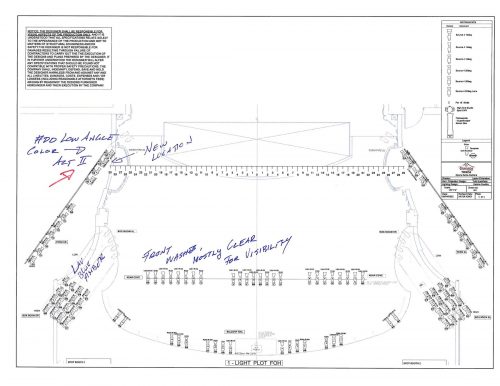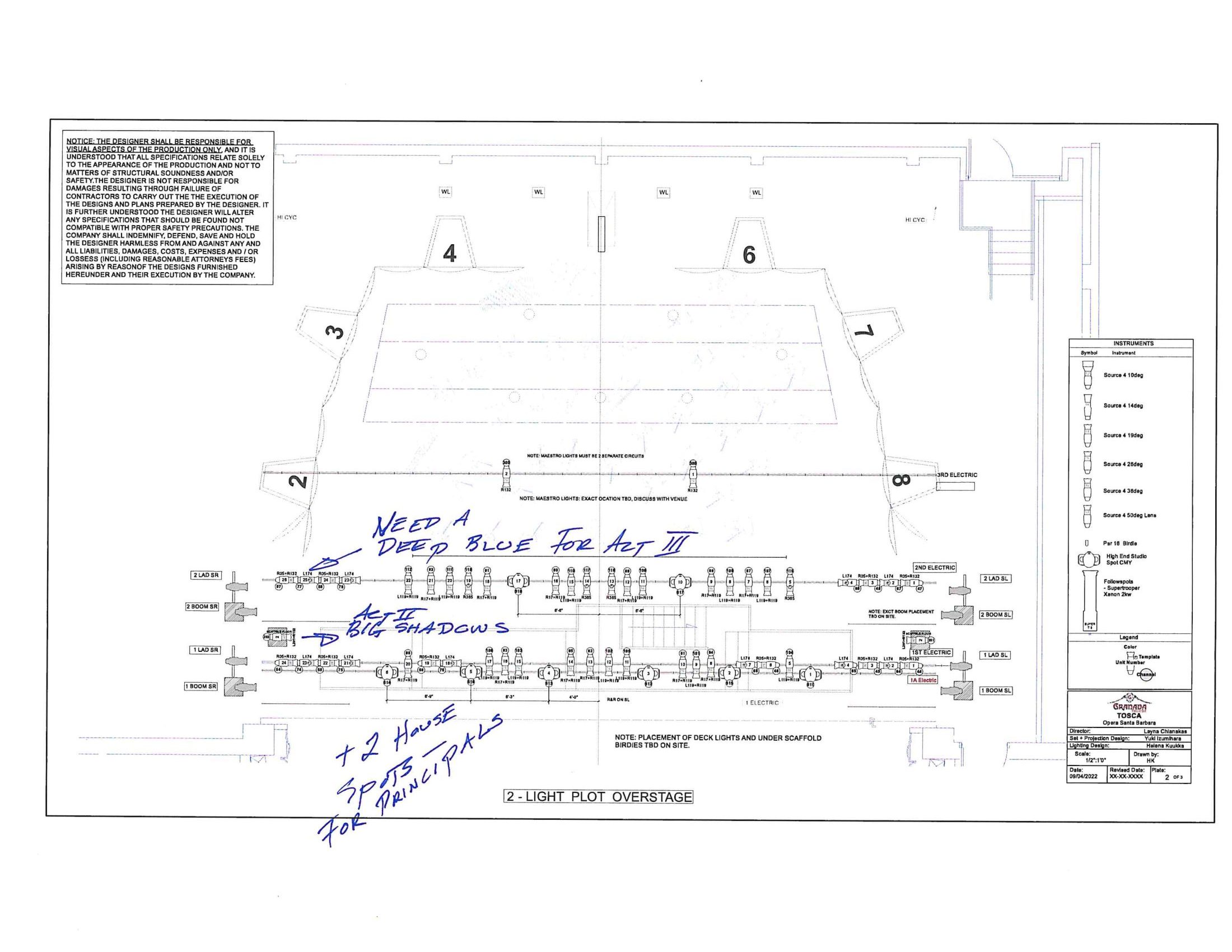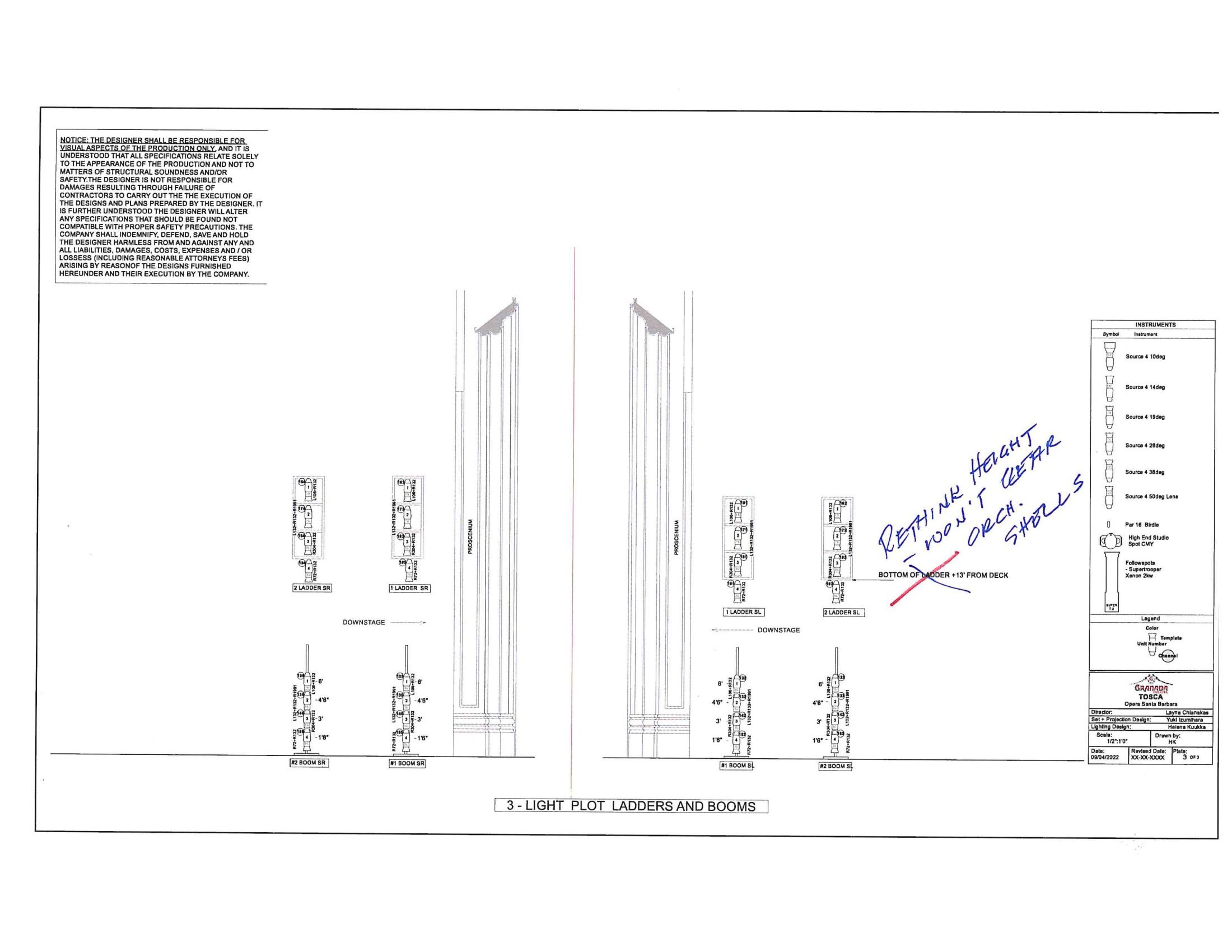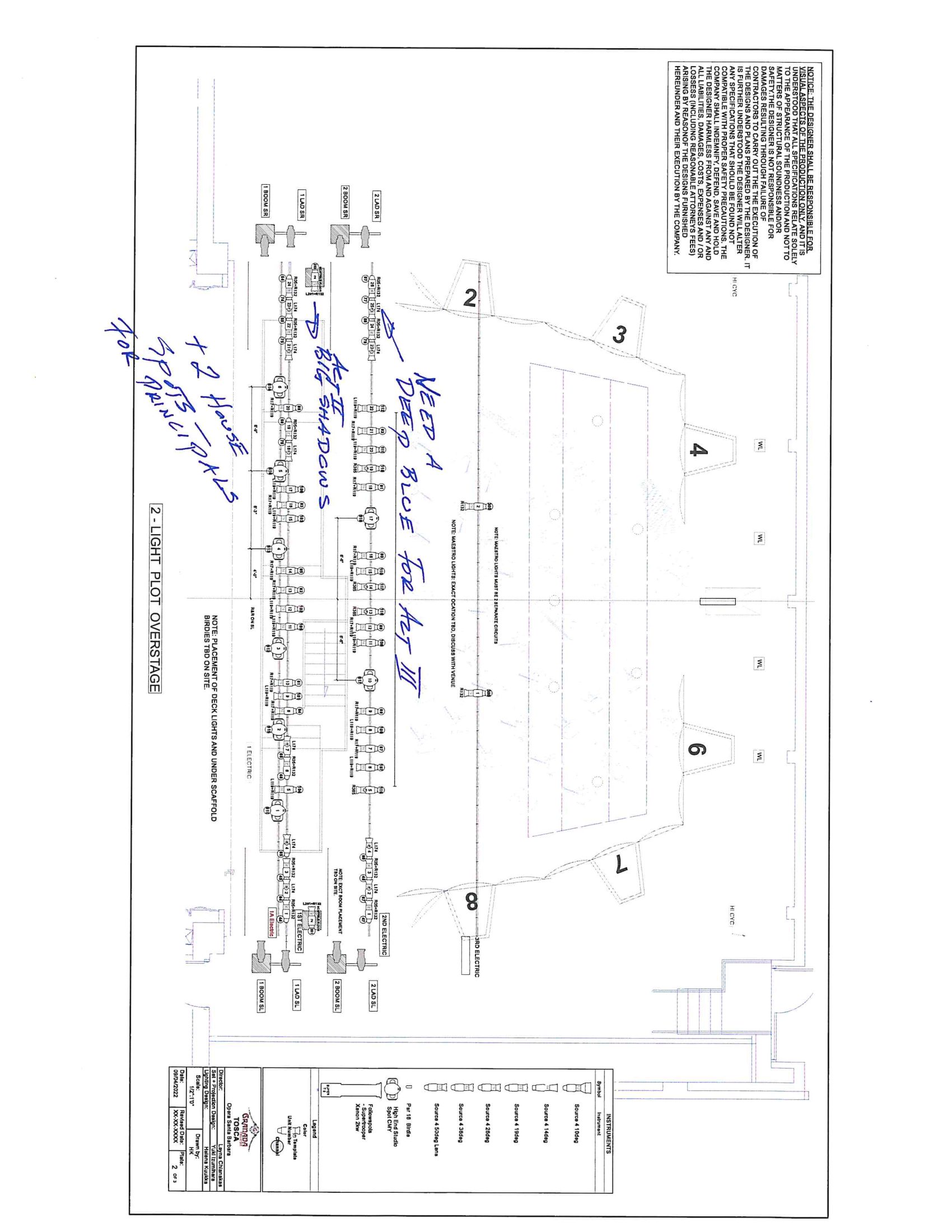Painting Tosca with Light
Opera Santa Barbara’s Director of Production is also veteran Lighting Designer, Helena Kuukka. Helena recently did the lighting design for last season’s Semele, As One, and the double bill for El Amor Brujo and Il Tabarro. She sits with OSB to talk about her vision for Tosca, the opera that will open our 22|23 Season.
Tosca is one of my favorite operas. I’ve lit several productions of Tosca over the years, and they all looked different from one another in terms of scenery, costumes, etc. What they all had in common was the typical opera setting: scenery and performers on stage, and the orchestra in the pit in front of the stage. This production, however, is quite different.
In our Tosca, the orchestra is on stage, taking up about two-thirds of the playing area. The set and the performers are in front of them, using the remaining stage, as well as the covered orchestra pit area. Between the orchestra and the performers is a big projection screen that serves as the background for the performance. This innovative setup comes with both opportunities and challenges.
In a typical setting, the light plot is designed to provide lighting from several angles: You have light from the front for visibility, and from the sides, the back, and overhead for color, texture, and dimensionality. When most of the action of the opera takes place in an area we don’t typically use, the pit cover, we basically lose access to many of the usual lighting possibilities.

In addition to providing visibility, the job of a lighting designer is to help create the mood and time of day by using color, angles and texture. In the case of our Tosca, the challenge is to find enough variety and options to support the storytelling with fewer-than-usual lighting positions and instruments. We are addressing that by adding additional lighting fixtures into places where the venue typically does not have them, and embedding smaller fixtures into the set itself. In terms of design choices I thought of the color of lights very carefully: I picked color filters that, when layered, create additional colors that work for the production. This enables me to extend my color choices without adding more actual fixtures. 
After all the technical aspects are in place, it all comes down to building the lighting looks in the theatre, and literally painting each moment of the opera with light. Having a smaller “toolbox” to work with just means you have to be very creative with how you use it. It is a bit of a challenge for sure, but it is also fun to have a different kind of a design opportunity. Limitations are not necessarily a bad thing–they also push the creative mind to work a little harder to find solutions and often unexpectedly good things happen as a result.
-Helena Kuukka
Lighting Designer, Tosca
Opera Santa Barbara
Don’t miss Tosca on Saturday, October 1 at the Granada Theatre. Visit here for tickets.



